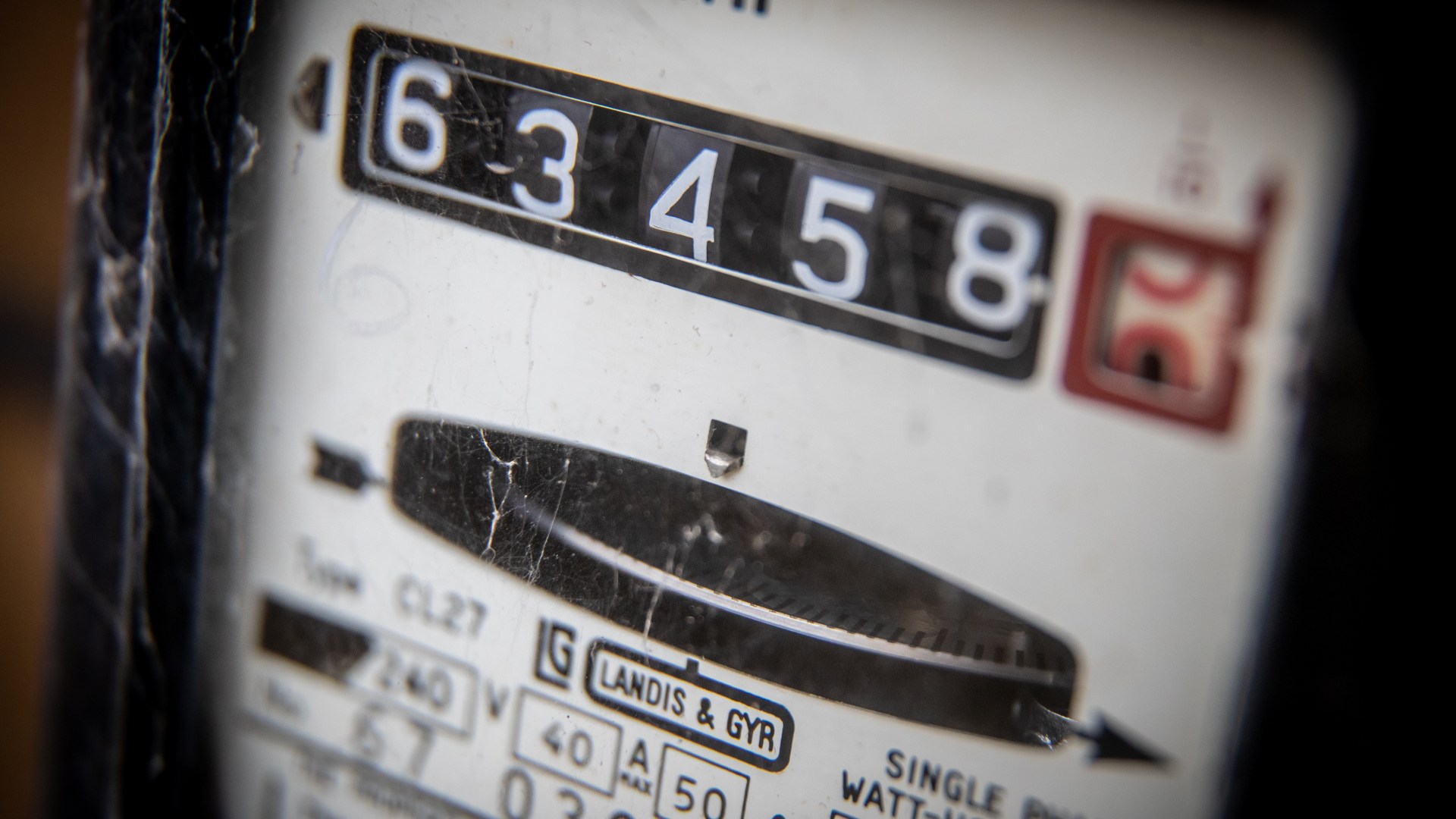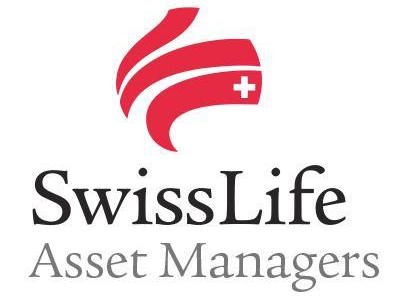Chess solution 2592
1 Bg6+ Kg8 2 Rf8+! Rxf8 3 Qxf8+! Kxf8 4 Re8 mate. Piece interpositions on the f file will only delay mate.
Chess solution 2591
1 Bxf7! Qxf7 2 Qd4! Nf6 3 Qd8+ Qe8 4 Qxc7 and White wins easily with rook and pawn for knight.
Chess solution 2590
1 h5! (threat 2 Rh8 mate) Kxh5 2 Rf6! and Black can only avoid Rh8 mate by giving up his rook with 2…Rxf3.
Chess solution 2589
1 R7e2! Qf6 2 Qxf8+! Kxf8 3 Re8 mate.
Chess solution 2588
1 g5+! Kxg5 2 Rg1+ Kh6 (if Kh4 3 Kf5 and 4 Rg4 mate) 3 Ng6! Bxb4 4 Kf5! (threat 5 Rh1 mate) Kh7 5 Rh1+ Kg8 6 Rh8 mate.
Chess solution 2587
1 Qxf4! Bxf4 2 Rxh5! gxh5 3 Rxh5 followed by Rh8 mate, which sacrificing Black’s bishop and queen will only delay.
Chess solution 2586
1 Bf1! Bxf1 2 Bd4! Rg8 3 Qxg7+! (3 Re8! also wins) Rxg7 4 Re8+ Qf8 5 Rxf8 mate. If 1 . . . Qxa4 2 Bh6! Rg8 3 Bxa6 wins (Qa6 4 Re8!)
Chess solution 2585
1 . . . Qf3! 2 cxb7+ Kf5! 3 Bxf3 (else Black mates by Rh1+! ) gxf3 and Rh1 mate. Sacrificing White’s queen only delays mate.
Chess solution 2584
1 Qxh7+! Nxh7 2 Ng6+ Kg8 3 Bd5 mate.
Chess solution 2583
It’s mate in four by 1 Rxg6+! Kxg6 (if fxg6 2 Bf8+ Kh7 3 Qf7 mate) 2 Nxe5+ Kh7 3 Qxf7+ Kh6 4 Qg6 mate.
Chess solution 2582
1…Nf5! 2 Kd2 Kg1! 3 Ke1 Nh4 4 Ke2 Ng2! and wins. If instead 1…Kg1? 2 Ke1! Kxh1 3 Kf1 draws since the BK can never escape from h1. Black needs either to prevent Kf1 as a reply to Kxh1, or to capture on h1 with his knight.. Mishra at 12 was the youngest ever grandmaster.
Chess solution 2581
1 Bxf6+! Rxf6 2 Rxh7+! and Black resigned because of 2 . . . Qxh7 3 Qxh7+ Kxh7 4 Nxf6+ Kg7 5 Nxe8+ when White, with a rook and a pawn for a bishop, wins easily. 1 Nxf6 also leads to a win, but is more complicated.
Chess solution 2580
1 Qh6 Qxe5 2 Qxh7+! Kxh7 3 Kg2 mate
Chess solution 2579
1 Ba7! e4 2 Kd8! Kf8 3 Nd7 mate. The subtle 1 Ba7! gives the black king a flight square at move two, thus avoiding a stalemate draw.
Chess solution 2578
1 Kf4 Kb7 2 c5! dxc5 3 Ke5 g3 4 Kd6 g2 5 a8=Q+! Kxa8 6 Kc7! g1=Q 7 b7+ Ka7 8 b8=Q+ Ka6 9 Qb6 mate.
Chess solution 2577
1 Nxh6! gxh6 2 g5! hxg5 3 h6 Ne7 4 h7 Ng6 5 Kg2. Now the black king is tied to watching the b6 pawn, while the white king advances up the board to capture Black’s g pawn, drive away the knight and queen the h pawn.
Chess solution 2576
It’s mate in three by 1…..f4+! 2 Kxf4 e5+! 3 dxe5 Rg4 mate.
Chess solution 2575
1 Rxh6+! Bxh6 2 g7+! when if Bxg7 3 Rh1+ Rh2 4 Rxh2+ gxh2 5 Qxh2+ Bh6 6 Qxh6 mate, or if Kxg7 3 Qg6+ Kh8 4 Qxh6 mate.
Chess solution 2574
Please note that there is no Chess solution this week as our column covers the Winton British Solving Championship
Chess solution 2573
1 Qxf6! gxf6 2 Nh7+ Ke8 3 Rg8 mate. 1 . . . Bf5 2 Nxf5 Bxf2+ 3 Kxf2 delays mate, but White wins easily.
Chess solution 2572
1 Nfe5! Qxe2 2 Qxh7+! Kxh7 3 Rh4+ Kg8 4 Ne7 mate. Black can avoid mate by 1..Qg5, but then 2 Kxh2 wins a knight ahead.
Chess solution 2571
1 Bf6! Qxf6 (fxg6 2 Qd5+ and 3 Qxa8+ wins) 2 Qh7+ Kf8 3 Rf1! e2 4 Rxf6 e1=Q+ 5 Kh2 soon mates.
Chess solution 2570
1 Qf7! Be7 2 Qxe7+! Kxe7 3 Rxg7+ Ke6 (if Kd8 4 Rh8+ Qe8 5 Bf6 mate) 4 Rh6+ Kf5 (if Kd5 5 Rg5 mate) 5 Rf6 mate.
Chess solution 2569
1 Rxh6+! gxh6 2 Qh7+! Nxh7 3 Nf7 mate.
Chess solution 2568
It’s mate in four by 1…Bg2+! 2 Kxg2 h1=Q+! 3 Rxh1 Nf4+ 4 Kg1 Qxa1 mate.
Chess solution 2567
1 Rxe5! Rxe5 2 Nc4! dxc4 (otherwise White is a piece up after 3 Nxe5) 3 Bxh7+! Kxh7 4 Qxd6 wins.
Chess solution 2566
1 Qe8+! If Rxe8 2 Nd7 mate, or Kxe8 2 Rg8 mate.
Chess 2565
1 Nb3! axb3 2 Kd2 Kc4 3 Kc1! sets up a fortress which cannot be breached. If Black advances his king to d3, then Kb1! and Ka1! creates an impenetrable defence. ff 1 Nb3! a3 2 bxa3 bxa3 3 Kd2 Kc4 4 Na1! draws.
Chess 2564
1 Qxd5! exd5 2 Nf6+! gxf6 3 exf6+ Be7 4 Rxe7+ Kf8 5 Re8+! Kxe8 6 Re1 mate. 1 Qxd5 Qxd5 2 Rxd5 Be7 delays mate, but Black is a knight down with a poor position.
Chess 2563
1 c3! d5 2 Kd2! d4 3 cxd4 Kxb4 4 Kd3 mate.
Chess 2562
1 Rh1! Kc4 2 Rb1! Kb4 3 Na5! Kxc5/a5 4 b4 mate.
Chess 2561
1 Rxh5! If Bxf1 2 Re2, or Bxh3 2 Rg4, or Bf3 2 Qxf3, or Bxe4 2 Bxe4.
Chess 2560
1 Nh6+ Kh8 2 Rf8+! Qxf8 3 Bxg7+! Qxg7 4 Qd8+ Re8 5 Qxe8+ Qg8 6 Qxg8 mate.
Chess 2559
1 Be1! g3 2 Be2! dxe2 3 Rb4! Kxb4 4 d4 mate.
Chess 2558
1 Rxf4! exf4 2 Qg6+ Kh8 3 Ng5! wins. The threat is 4 Qh7 mate, and if hxg5 4 Qh5 mate, or fxg5 4 Qh6 mate (the g7 pawn is pinned by the b2 bishop)
Chess 2557
1 axb4! Qxa1+ 2 Kd2! Qxh1 3 Qxc6+! bxc6 4 Ba6 mate.
Chess 2556
1…Rxh3! and if 2 Kxh3 Qxg4+! 3 Kxg4 Bf5+ 4 Kh5 Rh8 mate. 2 Nh2 holds out longer, but 2…Rfh8 3 Rh1 Bxe4+ 4 dxe4 f3+ 5 Kf1 Qxg4! 6 hxg4 Rxh1+ 7 Kf2 R8h2+ wins.
Chess 2555
It’s mate in five by 1 Rxh7+! Kxh7 2 Qh5+ Kg7 3 Bh6+! Rxh6 4 Rf7+ Kh8 5 Qxh6 mate.
Chess 2554
1 Rxf8+! Kxf8 2 Qh8+ Qg8 3 Rxe8+! Kxe8 (if Rxe8 4 Qf6+ Qf7 5 Qxf7 mate) 4 Qxg8+ Kd7 5 Qd5+ Ke8 6 Qa8+ Kd7 7 Qa4+ and 8 Qxc2 wins.
Chess 2553
1 Rd2! c6 2 Kf2! Kxf4 3 Ne6 mate.
Chess 2552
1 Rxg7! Kxg7 2 Qf6+ Kg8 (if Kf8 3 Bg6! wins) 3 Qxh6 f5 4 exf6 and Black must give up rook and queen just to delay mate.
Chess 2551
1 f3+ Kh4 2 Ra4!! Rxa4+ 3 Kb5 traps the rook with an easy win in the resulting pawn endgame.
Chess 2550
1 Bg3! hxg3 2 Nf2! gxf2 3 Rdf1! and if gxf1=Q 4 Rg8 mate or fxg1=Q 4 Rf8 mate.
Chess 2549
It’s mate in four by 1 . . . Rxf1+! 2 Kxf1 Bxc4+ 3 Kg1 Qe1+! 4 Rxe1 Rxe1 mate.
Chess 2548
1 Kb2! a1=Q+ 2 Rxa1! h1=Q 3 Qxh1 mate.
Chess 2547
1 . . . Qe3+ 2 Rf2 gxf2+ 3 Qxf2 (if 3 Kf1 Qxd3+ 4 Kxf2 Qd2+ forces mate) Rxg2+! 4 Kxg2 Nf4+ 5 Kf1 Qxf2+ 6 Kxf2 Nxd3+ and 7 . . . Nxb2 when Black’s extra knight wins easily.
Chess 2546
1 Qd8! b6/g5 2 Rd7! g5/b6 3 Rd2! exd2 4 Qxb6 mate
Chess 2545
1 Bd4! g3 2 Bb6! axb6 3 Kc1! Kxc3 4 Ne2 mate.
Chess 2544
1 Be5! If 1 . . . Kxe5 2 g4 c3 3 d4 mate. If 1 . . . c3 2 Bf4 cxd2 3 g4 mate. If 1 . . . Kg5 2 Bf4+ Kh5 (Kf5 3 g4 mate) 3 Rh6 mate.
Chess 2543
1 Qc4! and if 1…Bg4 2 Qd5 mate, or 1…Bg2/f1 2 g4 mate.
Chess 2542
1 Qa2! bxa2 2 Bf5! Kxf5 3 Ng7 mate.
Chess 2541
1 Rg4 Be6 2 Bf7! and White emerges rook for pawn ahead.
Chess 2540
1 . . . Qxg5+! 2 fxg5 (even the hopeless 2 Qg4 Qxg4+ only delays the mate by two moves) Bxh2+ 3 Kh1 Ng3 mate.
Chess 2538
1 . . . Rxh3+! 2 Kxh3 Qh5 mate.
Chess 2537
1 Bd5! and if Kxd5 2 Qf5 mate, or fxe6 2 Qg5 mate, or f5 2 Qd4 mate, or f6 2 Qe4 mate.
Chess 2536
1 Qd1! If bxa3 2 Qxa4 and 3 Qd7. If 1 . . . b3 or 1…Kd6 2 Qg4 and 3 Qd7. If 1 . . . Kc6 2 Qg4 Kb7 3 Qc8. If 1 . . . Ke6 2 Qxa4 Kf7 (bxa3 3 Qd7) 3 Qe8. Once you see 1 Qd1! the rest of the answer becomes a simple pattern.
Chess 2535
1 Rf4! If gxh6 or Kxh8 2 Rc8. If g5 2 Rc6. If g6 2 Rf7. If Kxh6 2 Rh4.
Chess 2534A
1…Qf1! leads to a decisive invasion by Black’s queen and rook: 2 Qd2 (2 Rxh6 Rxh6 3 Qxh6 Qe2+ wins the e5 bishop) Rg6 3 Rh2 (to cover the second rank) Rg1 4 Bb2 Qb1+ 5 Kc3 Bf5! (threatening Rd1) 6 Qc2 Qe1+ 7 Qd2 Qe5+ 8 Kc2 Bxd3+! 9 Kxd3 (9 Qxd3 Qxh2+) Rg3+ 10 Kc2 Qe4+ 11 Kc1 Rg1+ winning White’s queen. Black would work out the detail as he went along after realising that 1…Qf1! and 2…Rg6! is winning.
Chess 2534
White has to be careful to avoid a stalemate draw, so 1 Ba7! If 1..h6 2 b8=Q! h5 3 Qb6 h4 4 Qg1 mate. If 1…h5 2 b8=R! h4 3 Rb6 Kg1 4 Rb1 mate.
Chess 2533
1…b3! 2 Kd3 Ne3! wins because 3 Kc3 Nd5+! wins the bishop, 3 Kxe3 b2 queens, while other moves also lose.
Carlsen’s 1…Nd2+? allowed 2 Kd3 Nb3 (Nxf3 3 Bxc5 and Black’s remaining pawns will fall) 3 Kc4 a4 4 Bg5! Nd4 (4…Kxg5? 5 h7 queens) 5 Be3 a3 6 Bc1! and draws.
Chess 2532
1…Bg2! 2 Kxg2 Rxf2+! 3 Kxf2 Nxd3+ and Nxc5 wins. The obvious 1…Nf3+? fails to 2 Nxf3 Qxf3 3 Qg5+! Kh8 4 Qxd8+ and White wins.
Chess 2531
1 Rf6! and mate next move.
Chess 2530
1 Nd6! (threat 2 Nb7 or 2 Nf7 mate) cxd6 2 Qxb6 mate, or exd6 2 Qxf6 mate. Backward knight moves can be among the hardest to visualise.
Chess 2529
1 Bf1! dxc4 2 Bg2! Kd5 3 Ke3 mate.
Chess 2528
1 Na7! If Kxc7+ 2 bxa8=N mate If Kxa7+ 2 b8=N mate. If Rxa7 2 Rc8 mate.
Chess 2527
1 Ra2! bxa2 2 Bxa2 Kxg6 3 Bb1 mate. The trap is 1 Ra8?? when the black king is stalemated.
Chess 2526
1 Rf7! and if Rxe4 2 Rgxf8 mate, or Kxf7 2 Qg6 mate, or Kd8/Kd7/Rxg8 2 Qxe7 mate.
Chess 2525
1 b5-b6! If Kxc6 2 Bd5, or Kc8 2 Nd6, or Ka6 2 Nc5, or Ka8 2 b7.
Chess 2524
2524: 1 Rf8+! Kxd8 2 b7 Rb4! 3 Kxb4 c5+! 4 Kb5! Kc7 5 Ka6 Kb8 6 Kb6 c4 7 a4 c3 8 a5 c2 8 a6 c1=Q 10 a7 mate.
2524A: 1 Kg1! If 1…Rf4 2 Rb5! cxb5 3 b7. If 1…Rh6 2 Re8! Kxe8 3 b7. If 1…c5 2 Rf5! Rxf5 3 b7. If 1…Rd6 2 Re1! c5 3 Rb1 followed by c7.
2524B: 1 Kc8! b5 2 Kd7! Bf5+ 3 Kd6 b4 4 Ke5! Kg4 (if b3 5 Kxf5 b2 4 c8=Q) 5 Kd4 b3 6 Kc3 Be6 7 c8=Q Bxc8 8 Kxb3 draws.
Chess 2522
1 Kd2! and mate next move. If 1 . . . Rc7 2 Qf6 mate. If 1…Bb7 or Ra8 2 Qb6
Chess 2521
1 Qh2+! Kxg5 2 Qf4+ Kh5 3 g4+ Kh4 4 Kf3! followed by 5 g5+ Kh3 (Kh5 6 Qg4 mate) 6 Qg3 mate, which Black can only delay by giving up his queen by 4…Qc7. If 4…Be5 5 Qh6 mate.
Chess 2520
1 Qb5! is the only legal checkmate.
Chess 2519
1 Kc1! Bh6 or f5 (if Bxf4+ 2 Bxf4 mate) 2 Rgd7! Bxf4+ 3 R7d2 mate.
Chess 2518
1 Re7+ Bf7 2 Rxf7+! Kxf7 3 Qxa7+ Kf8 4 Re6! Qf7 5 Qc5+ Kg7 6 Re7 and White emerges a bishop ahead.
Chess 2517
1 Rf1! If Kd4 2 Qd3+ Ke5 3 f4 mate (the point of 1 Rf1). If 1…e5 2 Rb1 and 3 Q mates. If 1…Kxb5 2 Rb1+ and 3 Q mates.
Chess 2516
1 Ra7! 2 Rdd7! and 3 Rac7 mates. The black pawn is necessary, else there would be mate in two by 1 Kb4 Kb6 2 Rd6. With the pawn, 1 Kb4 is met by b2 and queening with check.
Chess 2515
1 Ng6! fxg6+ 2 Qe7! g5 or Kxa7 3 Qxb7 mate.
Chess 2514
1 Bh1! Kf4 2 Kg2! Ke4 3 Kg3 mate.
Chess 2513
1 . . . f4+! 2 Kxf4 e5+! 3 dxe5 Rg4 mate.
Chess 2512
1 . . . Bxf2+! 2 Kxf2 (if 2 Kf1 Qf4! followed by a discovered check) Qe3+ 3 Kf1 Rg4! followed by Rf4 and White has to give up her queen.
Chess 2511
1 Be5+! leads to mate after 1 . . . Bxe5 2 Qxe8+ or either Rxe5 2 Qf6+
Chess 2510
1 Rh8+! Kxh8 2 g6! followed by Rc8 mate.
Chess 2509
1 Qh4! Rg8 2 Rxf6! Qxf6 3 d6+! and Black loses his queen. In the game, White chose 1 Qg7?
Chess 2508
It’s mate in three by 1 . . . h5+! If 2 Kf4 Re4+ 3 Kg5 Qh4 mate. If 2 Kg5 Re5+ 3 Kf4 g5 or Rf5 mate.
Chess 2507
1 Bxg7+! Kxg7 2 Nf5+! exf5 3 Rxe7 Nxe7 4 Qe2! forks Black’s knights and wins one of them leaving White queen against rook and bishop and an easy win. Karpov resigned a few moves later.
Chess 2506
1 Qh6+ Kf7 2 Rf4! exf4 3 Re1! when the double threat of Qg7/h7 mate forces Black to give up his queen.
Chess 2505
1 Rb8+! Qxb8 (if Kf7 2 Qa7+ and Black is soon mated) 2 Qg1/g2+ Kf7 (Kh8 3 Qg7 mate) 3 Qg7+ Ke8 4 Qg8/h8+ and 5 Qxb8 wins easily with queen for rook.
Chess 2504
1 Na4! bxa4 2 Rf4! exf4 3 gxf4 Ne6 (the only defence to 4 Rg1+ and Qg7 mate) 4 Rg1+ Ng5 5 fxg5 and the g file mate follows. An immediate 1 Rf4?? fails to exf4 2 gxf4 dxc3 when 3 Rg1+ allows Bxg1 or 1 Rf4?? exf4 2 Na4 f3+! and the g file stays closed.
Chess 2503
1 Bc7! Rxc7 2 Re1! wins. The threat is 3 Rh8 mate. If 2..f5 3 g6! Rcxd7 4 Rh8 mate. If 2 . . . Kg8 3 Re8+ Bf8 4 Rxd8 f6 5 g6 Rc6 6 Rh8+! Kxh8 7 Rxf8 mate.
Chess 2502
1 Rxf7! Kxf7 2 Bc4+! forces mate in three. The game ended 1…Nc5 2 Qxc5 Kxf7 3 Bc4+ Resigns. If Kg6 4 Qf5 mate. If Black declines the rook, then 1….Bb5 2 Qg6 and Black must give up his queen to avoid mate.
Chess 2501
1 Be4+! mates in three after 1 . . . g6 (if Bxe4 or dxe4 2 Qxh5 mate, or Kh6 2 Rh8 mate) 2 Qxh5+ Kg7 3 Qh8 mate.
Chess 2500
1 Bg8! and mate next move. If 1 . . . a2 2 Qxb2, or if bxc1=Q 2 Qb6, or if cxb1=Q 2 Rc6.
Chess 2499A
1 . . . Nh2! and White resigned. If 2 Kxh2 Be5 pins and wins the rook, and otherwise Black queens his f2 pawn.
Chess 2499
1 Rb6! Kxc4 2 Qd4 mate.
Chess 2498
1 Bxc5! Nxc5 (if Rxc5? 2 Qh8+ and 3 Qxd8) 2 Qh8+ Kf7 3 Be8+! Qxe8 (if Ke7 4 Qxg7+) 4 Nd6+ wins the queen.
Chess 2497
1 Nxf6+! Rxf6 2 Rxe7+ Kf8 3 Bh6+! Rxh6 4 Qxf7 mate. 1 dxe7 and 1 Qxd3 also win, but are slower.
Chess 2496
1 Rh8+ Kg6 2 Qg5+! hxg5 3 h5 mate.
Chess 2495
1 Rb3! Resigns. If Rxb3 2 Qh8+! Ng8 3 e7+ Ke8 4 Qxg8+
and wins.
Royal v Koepke: 1 Qxh7+! Kxh7 2 Rh4+ Kg8 3 Rh8 mate.
Chess 2494
1…Rg4+! 2 Kxg4 Qg2+ 3 Kh5 Qf3 mate.
Chess 2493
1 Re8+! Rxe8 2 Qxg7+! Kxg7 3 Nh5+ and 4 Rxh3 puts White two pawns up with winning united passed e4 and f5 pawns.
Chess 2492
1 Bh5+! Kxh5 2 g4+! fxg4 3 Rh7+ Kg6 4 Qf7 mate.
Chess 2491
1 Rf3! f6 ( or f5+ 2 Kxf5) 2 Kf5! Kxd5 3 Nb6 mate.
Chess 2490
1 Nxe6! Rxe6 2 Nf7 mate. If 1…Be7 2 Qxf6+! Bxf6 3 Nf7 mate.
Chess 2489
1…h7-h5! 2 Qf8+ Kh7 and White overstepped the time limit. He has no reasonable defence to the double threat of Qxh1 mate and Qf1+.
Chess 2488
1 Rh8+! Kxh8 2 Rh4+! (but not 2 Qh5+? Kg8 3 Rh4 f5!) Kg8 3 Rh8+! Kxh8 4 Qh5+ Kg8 5 Qh7 mate.
Chess 2487
(a) 1 f8=N! g6 2 Kh6! g5 3 Ng6 mate. (b) The diagram is an illegal position! Black has no possible last move.
Chess 2486
1 Rxf4! exf4 2 Qg6+ Kh8 3 Ng5! and White mates by Qh7, Nf7, Qh5, or after 3…fxg5 4 Qxh6.
Chess 2485
1 Qg6. If exf5 2 Qxa6, or N moves 2 Rc5, or Bb5 2 Rf4, or Kxd3 2 Rc5.
Chess 2484
1 Nc6! Bxc6 2 Qxh7+! Kxh7 3 Rh3+ Kg8 4 Rh8 mate.
Chess 2483
1 Rh8+ and Anand resigned. The Indian and the all-time No1 woman both saw 1…Kg7 2 Qd4+! Bf6 3 Qxf6+! Rxf6 4 Rh7+! Kxh7 5 Nxf6+ Kg7 6 Nxd7 when White is a knight ahead in a simple endgame.
Chess 2482
The game ended 1 Nf6+! gxf6 2 exf6 (threat 3 Qg5+ and mate) h6 3 Qxf8+! Kxf8 4 Rd8 mate.
Chess 2481
1…Qxe4! and White resigned due to 2 Rxe4 Ra1+ and mates.
Chess 2480
1 Bf3! Resigns. Black is lost however he replies. If Ba8/b7 2 Bh5! gxh5 3 g6 hxg6 4 h7 queens.
If Be8 or Kd7 2 Bxd5 and more black pawns will fall. If Ke6 2 Kc5 and Black loses his Q-side pawns.
A classic case of zugzwang, where the obligation to make a move is fatal.
Chess 2479
1…Qc2! 2 Rxa5 (if 2 Ra2 Rxa4! 3 Rxc2 Rxa1) Qxe2+ 3 Kg1 Qe3+ 4 Kh1 Rf2 and White resigned. After 5 Qxe5+ Kh7 he will soon be mated.
Chess 2478
1 f7! Resigns. If Rxe6 2 a7! and a white pawn queens. Slower first moves would not spark immediate surrender, while 1 a7? Bxa7 2 f7 allows Rh1+ followed by Bc5, and Black draws.
Chess 2477
It’s mate in six at most by 1…Qxf1+! 2 Kxf1 d2+ 3 Kg2 Bc6+ 4 Qd5 Bxd5+ 5 e4 Bxe4+ 6 Kg1 d1=Q mate.
Chess 2476
1 b4! Kxc4 2 Nf4! g6/g5 3 Rc7 mate.
Chess 2475
1…Nxc3?? 2 Qxe6+! fxe6 3 Bg6 mate. An elegant double bishop mate.
Chess 2474
1 Qxa3+ Ra4 2 Qxa4+! bxa4 3 Rd5+ Kb4 (giving up the queen by Qc5 only delays mate) 4 Re4+ Ka3 5 Rxa4 mate.
Chess 2473
Anand resigned (see main text) because after playing 1 Qb5?? he noticed 1….Qxf3+! when 2 Kxf3 Nh4 is mate while 2 Kg1 Qxh3 is hopeless.
Chess 2472
1 Ba6! e5 2 Re2! e4 3 Kb5! Kd3 4 Kb4 mate.
Chess 2471
1 Qxe5! and mate next move.
Chess 2470
1 Rxc6+! Kxc6 2 Ne5+ Kd5 (if 2…Kc5? 3 Nd3+ forks king and queen) 3 Qb7+! and Black resigned.
If 3..Kd6 (or 3…Kd4 4 Nf3+ and 5 Nxe1 wins the queen) 4 Qd7+! and if 4…Kxe5 5 Qe7+ and 6 Qxe1 or 4…Kc5 5 Nd3+ and 6 Nxe1 both win the queen.
Chess 2469
1 Qc6+ Kb8 (if Ka7? 2 Nb5+ wins) 2 Kc2!! Black is in zugzwang (compulsion to make a losing move) as his queen has no safe squares available to retain the guard against Qb7 mate.
Chess 2468
1….Qf2! wins on material for Black. If then 2 Qxg6!? then not 2…hxg6?? 3 Nxg6 mate but 2….Qf1+! and mates.
Chess 2467
1 Bb2! Rxb2 2 Rxf6+! Qxf6 3 Qd7+ Kf8 4 Re8 mate. The bishop sacrifice diverted the b8 rook from guarding the back rank.
Chess 2466
1 Rd6! with the decisive threats of 2 Rxd8 or of 2 Qxf8+! Qxf8 3 Ng6 mate.
Chess 2465
1…Rh5+! 2 Kxh5 Ng7+ 3 Kh4 (if 3 Kh6 Rh8 mate) Nf5+ 4 Kh5 Rh8+ 5 Kg4 Rh4 mate.
Chess 2464
1 Kc4! Ka7 2 Qc7 Ka6 3 b8=N mate.
Chess 2463
1 e3! d6 2 Qh5 Bg4 3 e4! Bd1! 4 Qxd1 and we have the diagram.
Chess 2462
1..Qh1+ 2 Kf2 g3+! 3 Ke1 (if 3 Kxg3 Qh4 mate) Qxf1+! 4 Kxf1 Rh1 mate.
Chess 2461
1 Rxf6! gxf6 2 Kb2 Rxa4 3 Nc5+ and 4 Nxa4 wins.
Chess 2460
1 Qd4! b6 2 Ra3 Qb4 3 c3 traps the queen.
Chess 2459
1 g5! If now 1…fxg5 2 hxg5 and White, effectively a pawn up, will soon invade the black defences via the queen’s flank. The game ended 1…f5 2 exf5 gxf5 3 h5 Kxd5 4 g6! e4+ 5 Ke2 and Black resigned. If 5…hxg6 6 h6! and White’s h pawn queens.
Chess 2458
1 Bh1! Kf4 2 Kg2! Ke4 3 Kg3 mate.
Chess 2457
2457 1 Bb5! Resigns. If Bxb5 2 Qxd8 mate, or Qxb5 2 Nd6+ wins the queen, or 0-0 2 Bxd7 with a rook up. 2457A: 1..Qh2+! 2 Nxh2 Ng3 mate.
Chess 2456
1 Qh6! Qxf6 2 Rd8+! Bxd8 3 Qf8 mate.
Chess 2455
1 Kg2! If f3+ 2 Nxf3+! Kc6 3 Ne5 mate. If 1…N moves 2 Nf3+ with the same mate. If 1…Ka6 2 Nf3! and 3 Ra7 mate.
Chess 2454
1…Bd4+! and if 2 cxd4 Qb1+ 3 Ne1 Rxe1+ 4 Bxe1 Qxe1 mate. Black’s bishop check forced White to block the d1-d8 file, eliminating the defence Qd5-d1.
Chess 2453
1 Nd7+! and Timman resigned in view of the forced sequence 1…Rxd7 2 Rc8+ Rd8 3 Rxd8+ Qxd8 4 Nxe6+ winning the queen.
Chess 2452
1 f4! exf3 en passant 2 Bf2! wins. White captures Kxh5, then advances his g and h pawns.
Chess 2451
1…c5! 2 Rxc5 Rxc5 3 Qxc5 Qf3! 4 Nxf3 Rxd1+ 5 Ne1 Rxe1 mate. The trap is 1…Qf3?? 2 Nxf3 Rxd1+ 3 Ne1! and White wins. Video solution: 46 Re5+! Kh4 47 Rg4 mate, then 47/48 Rg5+! hxg5 (Kh4 48/49 Re4 mate) 48/49 Rh7 mate.
Chess 2450
1 Qxd6! Resigns. If Bxd6 2 fxg7 mate. If Rxd6 2 fxg7+ Bxg7 3 Rf8 mate. If Qe8 2 Qxf8+! Qxf8 3 fxg7+ Qxg7 4 Rxd8+ Be8 5 Rxe8 mate. The longest Black can hold out is by 1…Re5, when it is mate in nine from the diagram.
Chess 2449
1 . . . h5+! 2 Kxh5 Qe5+ 3 Kg4 f5+ 4 Kh5 f4+ 5 Kg4 Qf5 mate.
Chess 2448
1 Ne8+ Kg8 2 Qh8+! Kxh8 3 Rxf8 mate.
Chess 2447
1 c8=N+! Rxc8 2 bxc8=N+! followed by 3 Rxg1 and White wins with his extra rook.
Chess 2446
1 Nh5+! gxh5 (if Kh8 2 Qxf8+! mates or Kg8 2 Nf6+ and 3 Nxe8 wins) 2 Bh6+! and if Kxh6 3 Qf6 mate or Kg8 3 Qxf8+! mates.
Chess 2445
1 Re1! Rxe1 2 Bxe1 Bc8 3 a6! Bd7 (if Bxa6 4 d7) 4 a7 Bc6 5 d7! and a white pawn queens.
Chess 2444
1 Qh6+! Bxh6 2 Ng5++ Kh8 3 Rh7 mate.
Chess 2443
1 Bf8! is the only way. 1…Kxf8 2 Qxg6 d2 3 Qc2 Bh6 4 Kf2! (to stop Be3) followed by g3 and f4 after which the d2 pawn falls and the win is simple. Instead 1 Kf2?? d2! wins for Black.
Chess 2442
1 Bh6! with the double threat 2 Bxe6+ winning the queen and 2 Rxg7+ winning the bishop. Instead 1 Bxe6+? Qxe6 2 Rxg7+ Kxg7 3 Bh6+ fails to Kf7!
Chess 2441
1…Rh2+ 2 Kg1 Rh1+! 3 Kxh1 Qd5+ 4 Qf3 Qxf3+ 5 Kg1 Qg2 mate.
Chess 2440
“Yes, it is mate in two”. 1 Qxa7+! Kxa7 2 Ra3 mate.
Chess 2439
1 Bb3! Rgd8 (if c2 2 a7 Rbd8 3 Bxg8 Rxg8 4 Rc8 wins) 2 Rd6+! Kxe4 3 Bc2 mate.
Chess 2438
1 Rxb7! Rxb7 2 e7! wins after Rxe7 3 Bxd5+ Kh8 4 Rf8 mate.
Chess 2437
1 Rxd4! Rxd4 2 Rxd4 Rxd4 3 Nd5! cxd5 4 h7 and White’s pawn queens.
Chess 2436
1 Qd8+ Kh7 2 Be8! Resigns. 3 Bg6 mate is a winning threat.
Chess 2435
1 Nxg5+ Kh6 2 Nf7+! Kh7 (if Kg6/h5 3 Ne5+ and 4 Nxd3) 3 Qh8+! Kg6 4 Ne5+ and 5 Nxd3 wins.
Chess 2434
1 d4 2 d5 3 d6 4 dxc7 5 dxb8=R! 6 Rxb7 7 Rxd7 8 Rxd8 mate.
Chess 2433
1 h4! Bc1 (other bishop moves are no better) 2 Qxg6! fxg6 3 Nf6++ and 4 Nxe8 gains at least rook for knight with an easily won ending.
Chess 2432
1 . . . Re1+! wins. If 2 Nxe1 Qxf2 mate or 2 Kxe1 Bxf2+! 3 Kxf2 Qxc4 wins the queen.
Chess 2431
1…Ne3+! 2 fxe3 Rc2+ 3 Kh3 Qf1+ 4 Kh4 Rxh2+ 5 Kg5 h6+ 6 Kg6 Qf7 mate.
Chess 2430
Black won in style by 1 . . . Qxb4! 2 cxb4 Nd2+! 3 Rxd2 and now both 3 . . . Ra1+! 4 Kxa1 Rc1 and 3 . . . Rc1+! 4 Kxc1 Ra1 deliver checkmate.
Chess 2429
1. . . cxb2+ 2 Bxb2 Rc1+! and Carlsen resigned because he loses his queen.
Chess 2428
1 Rd8! Qxd8 2 Ng6+! hxg6 3 Qh4 mate.
Chess 2427
7…d3 8 Ng5! with a triple attack on f7 is decisive. The best Black can do is 8…h6 9 Bxf7+ Kd8 10 Ne6+ Bxe6 11 Bxe6 Nbd7 12 Bxd7 Qxd7 13 Qxb7 Qd5 14 Qxd5 and White will soon win the d3 pawn with a winning endgame two pawns up.
Chess 2426
1…Nf3+! draws. If 2 exf3 Qxf1+! 3 Kxf1 stalemate draw. The game ended 2 Kg2 Qxe2+! 3 Bxe2 stalemate draw. If 2 Kf2 Qe1+ and now 3 Kg2 Qxe2+! draws while 3 Kxf3?? loses to Qxf1 mate.
Instead 1…Nh3+? loses to 2 Kh2! Qxf1 3 Qh7+ Kg4 4 Qh4 mate.
Chess 2425
1 gxh5! Nxh5 (Rxd4 holds out longer) 2 Rxf7! Rxf7 3 Rxf7 Kxf7 4 Qxg6+ Kf8 5 Qh6+ Ng7 6 Bxg6 (threat 7 Qh8 mate) Bf6 (the only try) 7 exf6 Qxf6 8 Bc5+ Rd6 9 Bxd6+ Kg8 10 Qh7 mate.
Chess 2424
1 Nd7! and Black resigned. If 1…Rxd7 2 Qf8+! and 3 Rxc5+ wins. 1…Nh3++ 2 Kg2 Nf4+ 3 Bxf4 is no improvement.
Chess 2423
1 Qxd5! exd5 2 Rdh1 followed by 3 Rh8+! Bxh8 4 Rxh8 mate.
Chess 2422
1 Nf7++ Kg8 2 Qh8+! Nxh8 3 Nh6 mate.
Chess 2421
1…Kd6! and White resigned due to 2 Kxg6 a4 3 f5 a3 4 f6 a2 5 f7 Ke7! 6 Kg7 a1=Q queening with check. No better for White is 3 b6 a4 4 b7 Kc7! and Black queens first.
Chess 2420
1…Qxh2+! 2 Kxh2 Rxh4+ 3 Kg3 (if 3 Kg1 Rh1 mate) Rh3+ 4 Kf4 Rf3+ 5 Ke5 Rg6! and White has no defence to Re6 mate or d7-d6 mate.
Chess 2419
(by Heinrich Juhe, 1974). 1 Rf1! !f Kxe4 2 Qh1, or Kxe6 2 Qg8, or Kxc6 2 Qa8, or Kc4 2 Nf4.
1 Qa1! If Kg8 2 Nf8! Kxf8 3 Qh8 mate. If Kh6 2 Qh8+ Kg6 3 Nf8 mate. If Kg6 2 Nf8+ Kh6 3 Qh8 mate.
1 c8=B! b3 2 Bg4! b2 3 Bd1! Kxb1 4 Bb3 mate. The trap is 1 c8=Q? b3 2 Qh3 b2 3 Rfc1 when not bxc1=Q?? 4 Qb3 mate but bxc1=N! and White has no mating reply.
1 Ra7! axb3 2 Ra4! and if Kxa4 3 Nc3 mate or Kxc4 3 Nxa3 mate.
1…Qd2! is a fatal cross-pin, so that if 2 Bxc5 Qxg5. After 2 Rae1 in the game Rd3! won at least a piece, and White soon resigned.
1….Rh2! and if 2 Qxh2 Rxc3+! mates or gains decisive material.
1…Bf4! 2 Resigns. If 2 Qxf4 Nxh3+ and Nxf4, or 2 Qd3 Bxd2 3 Qxd2 Nf3+ and Nxd2, winning White’s queen in both cases.
1…Nf3+! and White resigned. If 2 exf3 Qb1+ 3 Qf1 Rh1+! wins.
If 2 Bxf3 gxf3 3 Qxf3 Qb1+ 4 Kg2 Qh1+ 5 Kg3 Qh2+ 6 Kg4 Qh4 mate.
* please note this is an updated version owing to a correction in the second variation. The original read:
1…Nf3+! and White resigned. If 2 exf3 Qb1+ 3 Qf1 Rh1+! wins. If 2 Bxf3 gxf3 3 Qxf3 Qa1+ 4 Kg2 Qh1+ 5 Kg3 Qh2+ 6 Kg4 Qh3+ 7 Kg5 Qh5 mate.
1…Qxd1+! 2 Bxd1 Re1+ 3 Kg2 Bf1+! and if 4 Kg1 Bh3 mate or 4 Kf3 Ne5+! and 5…Nxd7 wins a rook and the game.
1 Qg4+ Kh8 2 Qg7+! Bxg7 3 Rb8+ and mates.
1…Qf5! Now 2 f4 is best. Instead White chose the plausible 2 Qh3?? Wesley So hoped for either a queen exchange or 2… Qf3 3 Qg2 with repeated moves but he missed 2…Rh1+! and wins.
1…g4+! 2 Bxg4 Rh2+! 3 Kxh2 Qxh4+ 4 Kg2 Qxg3+ and Qh2 mate.
1 Rf4! If Kxh1 2 Kf2! Kh2 3 Rh4 mate. If Kxg3 2 0-0! Kh3 3 R1f3 mate. Castling in a chess problem is allowed unless it can be proved illegal.
1 . . . Ng8+! and White resigned. If 2 Kf5 Nh6+ forks White’s king and queen. If 2 Ke6 Qb3+! 3 K moves Qxf7 skewers White’s king and queen.
1 e4! dxe4 2 Rd5++! Kxd5 3 Kb5! e3 4 Nf6 mate.
1…Bb5! wins by zugzwang (compulsion to make a losing move). Black’s bishop stays on the a6-f1 diagonal until White uses up all moves by his a3 pawn and K-side pawns (eg 2 h5 Kg7 3 h6+ Kh7 4 f6 Kg6) after which the WK must move and the c3 pawn queens.
1…g4+! 2 Kxg4 Bh5+! 3 Kxh5 Qg5 mate.
1 Qg5! and if Qxg5 2 Rxe8 mate. Better but insufficient is 1…g6 2 Qh6! gxf5 3 Rg4+! fxg4 4 Bxh7+ Kh8 5 Bg6+ Kg8 6 Qh7+ Kf8 6 Qxf7 mate.
1 Ra4! with a different mate for each black reply. If Kf5 2 Bd3, or Kh5 2 Bf7,or Kh4 2 Rh7, or Kh3 2 Bf1, or Kf3 2 Bd5, or Kf4 2 Rf7.
1 Kg1! threatens 2 b7 and queens. If Rf4 2 Rb5! cxb5 3 b7. If Rh6 2 Re8! Kxe8 3 b7. If c5 2 Rf5! Rxf5 3 b7. If Rd6 2 Re1! c5 3 Rb1 and b7. Most other white first moves fail to Rh6-h8 or Rf1-b1 stopping the b pawn. (by Pal Benko, 1990).
1 Bc3! h2 2 Ba5! Kxa7 3 Bc7 mate.
1 Rh7! The rook opens up two queen-bishop diagonal strikes ready for either black king move. If 1 … Kc1 2 Bh8! and if Kb1 3 Qg7 Ka2 4 Qb2 mate, or it Kd1 3 Qg7 Kc1/e1 4 Qa1 mate. If 1 … Ke1 2 Ba8! and if Kd1 3 Qb7 Kc1/e1 4 Qh1 mate or if Kf1 3 Qb7 Kg1 4 Qh1 mate.
1 Rh4! h6 2 Bh2! Kxd4 3 Ne5! fxe5 4 fxe5 mate.
1 Kc5! draws. The game ended 1 Kc4?? b5+ and White resigned because of 2 axb6 en passant Nxb6+ winning the rook. White overlooked until too late that Black’s final move gave check.
The white king is at c3. The only legal route to create the position is from white king at b3, bishop at a4, pawn at c2 versus black king at d1, rook at b5, bishop at d5, pawn at b4. Black has just played Bd5+ and the game continues 1 c4 bxc3 en passant double check 2 Kxc3 discovered check. The puzzle was created by Raymond Smullyan in 1957.
1…Kh5 and 1…Kh3 both draw, but the game ended 1…Kf3?? 2 Nh4+! and Black resigned because of 2…Ke3 3 Rg3+! Ke2/f2 4 Rg2+ and 5 Rxa2.
1…Nf3+! 2 gxf3 (if 2 Qxf3 Rxe1+ wins decisive material) Rg5+ 3 Kf1 Qh3+ 4 Ke2 Rg2 wins White’s queen.
1 Qf4! and Kramnik resigned. If Nxf4 2 Rf8 mate, and otherwise 2 Rf8+ mates quickly.
1 . . . Bxb3! wins. If (a) 2 axb3 a2+! 3 Kxa2 Ra6+ 4 Kb1 Ra1 mate. (b) 2 cxb3 Rc1+! 3 Nxc1 Qa1+! 4 Kxa1 Rxc1 mate.
1 Bg8+! Kxg8 2 Rb8+ Kh7 3 Ng6 and Black can only delay mate for one move.
1 . . . h4+ 2 Kh3 Rf3+! 3 gxf3 Bf1 mate.
1 . . . Bxa6! and White resigned. If 2 Qxa6 Rd1+! wins the queen.
1 e6! Bxe6 (if Rh5+ 2 Qh3 Rxh3+ 3 Kxh3 wins a rook ahead) 2 Rxc5! bxc5 3 Rxc5 and mate is stopped so White wins easily on material.
A draw. At first glance White is hopelessly lost because if 1 Qxh7? Qxg2 mate, but instead White plays 1 Rb5! when if Rxg7? 2 Rxd5 wins on material while if Qxb5? 2 Qxg8+ wins. Black then has his own resource 1 Rb5 Re8! so that if 2 Rxd5? Re1 mate. White stops the back row mate by 2 Rb1! and Black returns 2 . . . Rg8! So 1 Rb5! Re8! 2 Rb1! Rg8! with a draw, as neither side can improve.
1 Bxh7+! Kxh7 2 Rh3+ Kg8 3 Qh5 Qh6 4 Nf5! Qxh5 5 Ne7+! Kh7 6 Rxh5 mate. Black can only delay mate by giving up the queen.
1 Nf7+ Kg8 2 Nh6+! draws since if 2 . . . gxh6 and Black’s two h pawns are no more effective than one, while if 2,,,Kg8 3 Nf5 Bf6 4 Nxg7! and again Black only has two wrong-coloured rook pawns.
1 Qf8! Qxf2 2 Nf6+! gxf6 3 Qxf7+ Kh6 4 exf6 h4 5 Qg7+ Kh5 6 f7 and White queens and wins.
1 . . . Rxf3! and White resigned. If 2 Nxf3 Qxe3 and Black wins easily on material. If 2 Qxg5 Rxf2! and Black mates at f1 or gains decisive material.
1 . . . c5! and White resigned as his queen is forced away from indirect defence of f2. If 2 Qd3 Rxf2+ wins, while 2 Qxc5 Nxc5 3 Bxc5 Rh3! also leads to a speedy mate.
2380 1 . . . Bxb2+! 2 Qxb2 (if 2 Kxb2 Qxd1 wins on material) Qxd1+! 3 Kxd1 Rad8+ 4 Kc1 (4 Qd4 Rxd4+ is hopeless) Re1 mate.
1 . . . Kf1! and White resigned. If 2 Rh3 Qg2 mate, or 2 Rg4 Qf3+ and Qxg4, or 2 Rg5/6/7/8 Qh4 mate. Other black first moves are slower, and 1 . . . Qxg3?? is a stalemate draw. 2380 1 . . . Bxb2+! 2 Qxb2 (if 2 Kxb2 Qxd1 wins on material) Qxd1+! 3 Kxd1 Rad8+ 4 Kc1 (4 Qd4 Rxd4+ is hopeless) Re1 mate.
1 Qb3?? Qd7+! and White will be checkmated.
1 . . . Qc4+! 2 Bxc4 Rxh2 and White can only delay Rh1 mate. Instead the immediate 1 . . . Rxh2?? loses to 2 Qxf8+! Kxf8 3 Re8 mate, so Black had to start by diverting White’s b5 bishop.
1 Qg3! and Black resigned. The threat is 2 Qxe5 Qxe5 3 Nf7 mate. If 1 . . . h62 Qxe5 wins a piece, while if N6d7 2 Nf7+ wins the queen. Black’s only try is 1 Qg3 Nfg4 2 Bc3 Bb8 but then 3 Bxe5 Nxe5 4 Qxe5! wins a piece as before.
1 e6¹ Qc1+ (if Qxg3? 2 Rxd8 mate) 2 Kh2 Rxd4 3 e7! Qc8 3 Qe5! Rh4+ 4 Kg3 and Black resigned faced with the double threat Qg7 mate and e8Q+. 1 Rc5 and 1 hxg6 are slower wins.
1 h5! Rb1 2 Kg2! (stops Rh1) g4 3 h6 Rb5 4 h7 and White’s queening pawn will cost Black his rook.
1 g6+! and if Kxg6 2 Bf5+! Kh6 3 Rh8 mate or Kh6 2 Bf5! and mates.
1 Qf6! Qxh6 2 Rxe6 and Black resigned. Mate follows by Qh8 or by 2 . . . Qg7 3 Qd8.
(Black moves first) 1 Kb2 Rd5 2 Kc3 Rc5+ 3 Kd4 Nb3 mate.
1 . . . Nxf3+ 2 exf3 Bg2! and White resigned. If 3 Kxg2 Qh3+ and Qh1 mate or 3 Bxh8 Qh3! and mates.
Please note that as our column covers the Winton British Solving Championship, there is no Chess solution this week.
—–
1 . . . Bf3! (threat Rh1 mate) 2 Ke1 Rd4! (the follow-up Svidler overlooked) and Rd1 mate follows after White runs out of suicidal checks.
—–
1 . . . Kh6! threatens g6-g5 mate. If 2 g3-g4 Qf2 mate.
—–
1 Rxf6! gxf6 2 Qe3! and Carlsen resigned in the face of Qxh6+ and Qg7mate.
—–
1 Ng5! wins. If Qxg5 2 Rxh7 mate. If 1 . . . h6 2 Rxh6+ Qxh6 3 Qxh6 mate. If Bxh2 2 Rxh7+! Qxh7 3 Nxf7 mate.
—–
1 Rf8+! Kxf8 2 Qf1+! Rxf1, stalemate draw. Instead 2 Qf3+? Bxf3! or 2 Qf2+? Nf4! 3 Qxf4+ exf4 or gxf4 both allow White a pawn move so there is no stalemate.
—–
1 Bxf7+! Kxf7 2 Rxg5 is best, with an easy draw. As played, White fell for the trap 1 Bb1?? h4+ 2 Kg4 f5+! 3 Rxf5 which unpins the black rook and allows 3 . . . Rg2 mate.
—–
1 Rf7! g3 2 Be4! Ka2 3 Bh7! Ka1 4 Bg8! Ka2 5 Rf1 mate.
—–
1 Qg3! If Kd2 2 Qf3 Ke1 3 Kc2 mate. If Ke2 2 Kc1 Kf1 3 Kd2 mate (composed by Otto Wutzburg).
—–
1 a4! g4 2 Qa3! Bxb5+ 3 axb5 mate. The trap is 1 Qf5?? threatening 2 Qc8 mate, when Black’s Bxb5+ checks the white king.
—–
1 Qf4+! gxf4 2 Bxf4+ Ka8 3 Nb6+! axb6 4 axb6+ Na6 5 Rxc8+! Rxc8 6 Rxa6+! bxa6 7 Bg2+ Rc6 8 Bxc6 mate.
—–
1 a3 e5 2 Nc3 Bxa3 3 Ne4 Bf8 4 Ra5 Ke7 5 Rxe5 mate.
—–
1 Nh5+! If gxh5 2 Qg3+ and 3 Qg8 mate. The game ended 1 . . . Kh8 2 Bh6! gxh5 3 Qg3 Bxe4 4 Bg7 mate. If 1 . . . Kf8 2 Nxf6, threatening 3 Bh6 mate, is quickly decisive.
—–
1 . . . Rd7! If now 2 Be1 Rd1 3 Kf1 Bd3+ wins rook and bishop. The game ended 2 Bb4 Rd1+ 3 Kh2 Kg4! and White resigned since Rh1 mate can only be stopped by Rg5+ surrendering a rook.
—–
(a) 1 Nf5+! (b) Any black king move allows Rd6 mate, Rd8 mate, or Ng7+ forking king and rook, so Black had to play Rxf5 2 Kxf5 a4 3 Re2+ Kd7 4 Rd2+ with a draw. (c) Where does the king go, Yasser?
—–
1 R4xh5+ gxh5 2 Qc7+! (2 Rxh5+? Kg6! is only a draw) Kh8 3 Qe5+! Kh7 4 Rxh5+ Kg6 5 Qg5+ Kf7 6 Rh7+ Ke8/f8 7 Qe7 mate.
—–
1 Rh4! h6 2 Bh2! Kxd4 3 Ne5! fxe5 4 fxe5 mate.
—–
1 Rc7! wins a piece with the threat of Rxf7+ and Rxf6. Black’s dark squared bishop has to guard his d4 rook. The game ended 1 . . . Bh8 2 Rc8+! Ke7 3 Rxh8 and Black soon resigned.
—–
1 Qxf6! If exf6 2 Re8, or gxf6 2 Ne6, or Rxf6 2 hxg7, or g6 2 Qh8, or Kg8 2 Qxg7, or Nc4 2 d8=Q, or Ne8 2 Qxf7. Traps include 1 Q or Bxd6? Kg8! or 1 d8=Q+? Ne8 or 1 h7? e5! or 1 d7? e5! when 2 d8=Q+?!? leaves White’s king in check (by Denys Bonner, 1960).
—–
1 f3+ Kh4 2 Ra4!! Rxa4+ 3 Kb5. The black rook has no escape, so White has a trivially won pawn ending (composed by Josef Hasek, 1927).
—–
1 . . . Qxh2+! 2 Kxh2 hxg3++ 3 Kg2 Nf4 or Rh2 mate.
—–
1 Rf1! is the key. If Kxe4 2 Qh1, or Kxc6 2 Qa8, or Kxe6 2 Qg8, or Kc4 2 Nf4. The puzzle was composed by Heinrich Juhe.
—–
1 Qxc5! Qxc5 2 Be4+ Kh5 3 Kh3! and g4 mate.
—–
Solvers proposed 1 Ne3 ‘mate’ but this leaves the WK in check from the e4 rook. The real answer is 1 Qc8! (threat 2 Qg8 mate) when 1 . . . Nb4 2 Ne3 really is mate or 1 . . . Nd4 2 Nb6 mate (by John Rice and Michael Lipton).
—–
1 Rxg7! Kxg7 (if Rb1 2 Rg1! Rxd1 3 Rxh6 mate) 2 Qg1+ Kf8 (if Kh7 3 Bf5+ Kh8 4 Rxh6 mate) 3 Bf5+ Nxf5 4 Qg8+ Ke7 5 Qf7 mate.
Four-time Australian champion Cecil Purdy composed this puzzle and gave the answer as one and three-quarter moves. The white king is off the board so must be in White’s hand en route to 1 0-0-0 Ke3 2 Re1 mate. Castling is half a king move, half a rook move, hence White is a quarter of the way through the process. But I prefer 1.51 moves, with the king on the point of touchdown at c1.
Black fell into his own trap.The game ended 1 . . . Qxf6?? 2 Bg5 Bxf3 3 Qc1! (but not 3 Qd2?? Bb4! with an edge for Black) Bb4+ 4 Kf1! and Black, an IM, lost his queen at Athens 2001.
1 Qh7+ Ke6 (if the king goes to the back row, 2 Qh8+ and 3 Qxa8) 2 f5+ Kd5 3 Qg8+!! Qxg8 4 Kd3! and 5 c4 mate.
1 Bd8+! and Black resigned.If 1 . . . Kxd8 2 gxh6 Nf6 3 Kxb6 and White will queen the a4 or h6 pawn. If the black king stays on the queen’s side, the white king goes to the other flank to capture the knight and/or queen the h6 pawn. Knights fear rook pawns.
1 Bb3! (threat 2 Qa4 mate) If 1 . . . Kxb3 2 Qc2+ Ka3 3 Qa2 mate. 1 . . . Bf5+ 2 e4 only delays the mate. The game ended 1 . . . Bd7 2 Qc1+ Kxb3 3 Qc2+ Ka3 4 Qa2 mate.
Because if 1 Rc2+ Kf3! 2 b6 Black replies 2 . . . Qh3+! 3 Kxh3 with a stalemate draw.
1 Qd8! b6/g5 2 Rd7! g5/b6 3 Rd2! exd2 4 Qxb6 mate (by Fritz Giegold).
The traps are 1 c8=Q? which is an immediate stalemate draw, 1 c8=R? Ke6! 1 c8=B? Kc6! and 1 c8=N? Kc4! Instead, mate in two is by the unlikely 1 Ne4! when if Ke6 or Kc4 2 Qf7, or Kxe4 2 Qf3, or Kc6 2 Qd6. (composed by Fadil Abdurahmanovic, 1957).
The non-checking 1 Rd1! is the only way to mate in two. If Ke5 2 d4 mate, or Kc3 2 f7 mate, or Kc5/e3 2 Qg1 mate.
1 Qa2! bxa2 2 Bf5! Kxf5 3 Ng7 mate.
1 Bd4! g3 2 Bb6! axb6 3 Kc1! Kxc3 4 Ne2 mate.
1 Ng7+! Bxg7 2 g4+! when if fxg4 3 Qh2 mate or Kh4 3 Qg3 mate or (the longest line) Kxg4 3 Bd1+ Bf3 4 Bxf3+ Kh4 5 Qg3 mate.
1 Bd8! (threat 2 e7+) Re3 2 Bf6! and a white pawn queens.
1 . . . Ne7! stops White’s Qf8 and threatens Rh1 mate, which White can only prevent by 2 Qxc6, surrendering his queen.
1 Kb2! a1=Q+ 2 Rxa1 h1=Q 3 Qxh1 mate.
No chess solution this week.
1 Rh4! Rxb4+ 2 Kc5! when Rxh4 is a stalemate draw, Rc4+ 3 Rxc4 bxc4 4 Kxc4 is a drawn pawn endgame, and Rb2 3 Rh7+ Kb8 4 Kxc6 is a drawn rook ending. This tactical trick has occurred several times, and is worth remembering.
1 Bd7! Ke3 (if Kg2 2 h4 and queens or Kf3 2 Kd4! Kf4 3 h4) 2 h4 Ke4 (if Kf4 3 Kd4) 3 h5 Ke5 4 h6 Kf6 5 Be8! (the point of playing Bd7 earlier) when the black king cannot reach g7 so the pawn queens.
(by Florencio Mendes de Moraes) 1 Qa4 (or Qa3) Kg8 2 Qa1! Kf8 3 Q1a2 Ke8 4 Q2a3 Kd8 5 Q6a4! Kc8 6 Qa8+ Kc7 7 Q4a7 mate.
1 Qa3! threatening 2 Nc5 mate. If Black guards c5 by Qf8 then 2 Nxd2 mate, or if Qe3 2 Qxa8 mate. Traps are 1 Qg1? Qf4! (2 Nc5+ Kf3) and 1 Qf2? Qe3!
1 Rh5! Qxd7 2 Ng5+ Kh8 3 Rxh6 mate.
1 Qc3! (stops Black’s queen checks) Qb7 (Black has to guard against both Qg7 mate and Qc8+) 2 Qa1! wins. Black’s queen has to stay put to stop both Qg7 mate and Qa8+, while if 2 . . . Kf8 3 Qh8+ and 4 Qh7+ wins the queen.
White wins by 1 Rxe6! fxe6 2 Nd4! cxd4 3 d7 and the pawn queens.
1 Qe3-a3 is the only legal checkmate.
1 Nf5! Qd2+ (if Kg6 2 Rg7+ Kh5 3 Rh1 mate) 2 Kf3! (not 2 Kh3? Qxe1 3 Rxh6+ Kg5) Qxe1 (if Qh3+ 4 Kf2 Qd2+ 3 Re2 wins) 3 g4+ Kg6/g5 4 Rg7 mate.
1 Qe5!! wins with the threats 2 Qb8+ mating, 2 Qxd5 winning the queen and 2 c4+ winning the rook. If 1… Rxe5 2 c4+ wins the queen, or 1 . . . Qxe5 2 c4+ Rxc4 3 bxc4+ Kxc4 4 fxe5..
No solution published this week as the problem is the first stage of the national solving championship.
1 Bh2! Bxh2 2 g3 Bxg3 3 Rf4 Bxf4 4 d6 Bxd6 5 Qh2! Bxh2 6 Re5 Bxe5 7 Nb5 Bf4! 8 f6 Bxc7+ 9 Nxc7, draw by stalemate.
1 . . . h5+! 2 Kxh5 Ra8? 3 Kg3 Rh8 (Ne5+? 4 Kxf4) g3 avoids mate although White loses his h3 bishop. Instead 2 . . . Ne5! 3 Rxb2 Ra8! forces mate.
Surprisingly, it’s a draw: by 1 axb7 Re6+! 2 Kxe6 (if 2 Kd5 Re8 and captures the new queen) Kc6! when 3 b8=Q or 2 b8=R draw by stalemate, 3 b8=B cannot win with two dark-squared bishops, and 3 b8=N+ Kb7 draws.
1 Kd3! If Kf5 2 Kd4 mate, or Kd5 2 Qd4 mate.
1 Rd6 Kc8 2 Ka7! Kc7 3 Rac6 mate.
Yes, because if 1 Kg2! Rf2+ 2 Kh1! Rxe2 White has 3 Bd3+! Kxd3, draw by stalemate. After 1 Kg2 Black takes around 40 moves to checkmate even with optimum play, so in practice White might well have drawn by the 50-move rule.
1 . . . Ra4! and White resigned. He loses at least a rook after 2 Qxa3 Rxb1+ or 2 Rxb3 Qxa1+.
1 Rxe6! Kxe6 2 Qxd5+! Kxd5 3 Bc4 mate. Black saw it coming, so declined the rook, but after: 1 . . . Nb8 2 Re7+ Kg8 3 Bg2 Bf8 4 Qxd5+ he resigned faced with heavy material losses.
1 . . . Bxg3+! 2 Kxg3 Qc7+ 3 Kg4 Be6+ and White resigned because of 4 Kh5 Qf7+ 5 Kg5 h6 mate or 4 Kg5 Qg3+ 5 Kh5 Bf7 mate.
1 Rxf8+! Kxf8 2 Bxd6+! Resigns since Qxd6 3 Qa8+ leads to mate and 2 . . . K moves 3 Bxc7 puts White a piece ahead.
1 Qe4? f5! 2 Qxe5 Bf6 traps the white queen.
1 Kd4! Nc2+ 2 Ke5! Nxa1 (if f6+ 3 Ke6 Nxa1 4 Ke7 wins) 3 Kf6! c2 4 Rg8+! Rxg8 5 Nxf7 mate.
1 . . . Qe2! and White resigned,.If 2 Rxe2 Rf1 mate or 2 Rxf4 Qg2 mate or 2 Qd2 Qf1+! 3 Rxf1 Rxf1 mate.
1 Ke4! b4 2 Bh8! c3 3 Ke5! c2 4 Kf6! c1Q 5 Bg7 mate.
1 . . . Rb8+ 2 Rg8 Ne8! 3 Rf8 Kg6 and if 4 Kg8 Nf6+ and mates or 4 Rg8+ Kf7 5 Kh7 Nf6+ wins.
1 Rhe8! g5 2 Rd2! Kxd2 3 Bb4 mate.
1 Rf1! (not 1 Rxe6?? Rf2+ and Black wins) when if Rxe3 2 Rxf8 mate (the Bg7 is pinned). If 1… Rxf1 2 Qxf1 (threat 3 Qf8 mate) Qc8 3 Rxe6 Qxe6 4 Qf8+ Qg8 5 Bxg7 mate.
1 Bd6! Ncd4 (other moves also lose) 2 Qg7+! Nxg7 3 Nh6 mate.
1 f7+! If Kxf7 2 Rxh7+ wins. If Rxf7 2 Rh8+ wins. But the real point is Qxf7 2 Qc2! with the winning double threat of 3 Qxc8 mate and 3 Qxh7+.
White wins by sacrificing both rooks: 1 Rf8+! Rxf8 2 Ra8+! Kxa8 3 Qa3+ Kb8 4 Qxf8+ Qe8 5 Qxe8 mate.
1 Kxc4! d3 2 Kxd5 d2 3 g4+! Kf4 or Kxg4 4 Rc4+ and Rd4 and captures on d1 or d2.
1 Bxe8+ Kxe8 2 Qb5+! Rxb5, draw by stalemate.
1 Rh1! (here and next move Bd1! is also strong) Qe6 2 Rgh3! a4 3 Rxh5! gxh5 4 Rxh5 with the decisive threat 5 Qxh7+! Nxh7 6 Rxh7 mate.
1 Qe2! when if exf2 2 Qxh5+ Kg7 3 Rxg3+ wins. If 1 . . . Rg1+ 2 Rxg1 Rxg1+ 3 Kxg1 exf2+ 4 Kg2 keeps the Qxh5+ threat. The actual game ended 1 Ne4?? Qxe4+! 2 Bxe4 Rh3 mate.
(a)1 Rf7+! Kg5 2 h4+! Kxh4 (Kh6 3 Bxg7 mate) with 3 Rh1+ Kg5 4 Rh5 mate or 3 Rxg7 and 4 Rh1 mate. (b) 1 g4+! Kg5 (if Kxf4 2 Be3 mate) 2 h4+! and mates as previously.
1 Qxd3! If 1 . . . b2 2 Qb1! wins all the pawns. If 1 . . . c2 2 Qc3! a2 3 Qb2! with the same result.
The obvious answer is black king at d3 and White mates by 1 0-0-0, but this is invalid because the position with White to play has no legal black previous move. Correct is that there are two solutions: c6, when White mates in one by 1 Qb5, or d3, when Black, not White, delivers mate by Qg1.
(by Fritz Giegold, 1974) 1 Qxd5+! Kxd5 2 Ne6! and if Kxe6 2 Bxc4 mate, or Ke4 3 Bc6 mate.
(by Julien Guisle, Le Figaro 1956) 1 Rh7! The rook opens up two queen-bishop diagonal strikes.
If Kc1 2 Bh8! and if Kb1 3 Qg7 Ka2 4 Qb2 mate, or if 2… Kd1 3 Qg7 Kc1/e1 4 Qa1 mate. If 1 . . . Ke1 2 Ba8! and if Kd1 3 Qb7 Kc1/e1 4 Qh1 mate or if 2 . . . Kf1 3 Qb7 Kg1 4 Qh1 mate.
(by Pal Benko, 1990).1 Kg1! If Rf4 2 Rb5! cxb5 3 b7. If Rh6 2 Re8! Kxe8 3 b7. If c5 2 Rf5! Rxf5 3 b7. If 1 . . . Rd6 2 Re1! c5 3 Rb1. Most other white first moves fail to Rh6+-h8 or Rf1+-b1 stopping White’s b pawn.
(a) e3 (b) h1 (c) a8 and mate by 1 Qc8 (d) g7. However White arranges his three pieces, the BK always has a flight square at g8 or h7
(a) 1 . . . Kg3! and h5-h4-h3-h2 mate. (b) 1 f6! gxf6 2 Kxg2 Kg5 3 a4 bxa3 en passant 4 bxa3 Kf5 5 a4 Ke5 6 d6! cxd6 7 c6! dxc6 8 a5 and White queens..
1 . . . d1=N!! 2 Nxd1 Qe1 and White soon runs out of queen checks after which Qg1 mates. Instead 1 . . . d1=Q? allows 3 Nxg4+! fxg4 3 Qh7+! Kxh7 with a stalemate draw. In the actual game, which went differently, White could have drawn but blundered into defeat.
1 Bxe6! fxe6 (other moves also lose quickly) 2 Rh8+! Kxh8 3 Rh1+ Kg8 4 Rh8+! Kxh8 5 Qh1+ Kg8 6 Qh7 mate.
1 Nf6+ was the move-but it was White who resigned after 1 . . . exf6 2 gxf6 (threat 3 Qg7 mate) Qxf2+! because of 3 Kxf2 Ng4+ and Nxh6 or 3 Kh1 Qxf6.
(by A von Schmidt, 1900).1 Nb4! (threat 2 Nc6 mate) If Kxf4 or Kd6 2 Nd3 mate. Kasparov solution: 1 Bh5! with 2 Bxg6! hxg6 3 h7 and queens or 1,,,gxh5 2 g6!
1 . . . f4+! and Topalov resigned. If 2 Kxf4 Kd3! (threat Qg4 mate) 3 Qg5 Qf2 mate.
1 Bf3! bxa6 2 Ne2! a5 3 Re1! axb4 4 Nxd4! exd4 5 e5 mate.
1 Rc1! g4 2 Rc2! dxc2 3 Bc1! a3 4 Rf4! Kxf4 5 d4 mate.
1 Rd2! c6 2 Kf2! Kxf4 3 Ne6 mate.
1 Rf1! (the only way). If Bh6 2 Rf4! Bxf4 3 0-0 mate. If e4 2 Rf6! Bxf6 3 0-0 mate. If Rf8 2 Rxf8, or Bg8 2 Rf7! or Re6 2 Rf3! with the same mate. If Be4 2 Rf3 dxe2 3 Kxe2 mate.
(by Aleksandr and Kirill Sarychev, 1928) 1 Kc8! b5 2 Kd7! Bf5+ 3 Kd6 b4 4 Ke5! (gains a move by attacking the bishop) Kg4 5 Kd4 b3 6 Kc3 Be6 7 c8=Q Bxc8 8 Kxb3 draws.
1 Be2! h6 2 Rh4! h5 3 Kg5! Ke4 4 Bf3 mate.
1 Nc7! If Kxc7 2 Bh2 mate, or Kxe7 2 Bc5 mate, or Bxc7 2 Nc8 mate, or Bxe7 2 Ne8 mate. Near misses include 1 NChess: 2275f6? Bxa5!
1 Ra3! b4 2 Ra4! b3 3 Rh4! Kxh4 4 Nf3 mate.
1 Ra8! gxh4 2 Rg7! Kxg7 3 Be5 mate.
1 Be1! g3 2 Be2! dxe2 3 Rb4! Kxb4 4 d4 mate.
1 Rxa6! If Kxa6 2 Rc5! Ka7 3 Ra5 mate. If Kxc4 2 Rb6! Kd4 3 Rb4 mate.
1 Qg3! fxg3 2 Bc4! Kxc4 3 Rc2 mate.
The drawing move is 1 . . . Rd2! (threat Rh2+) 2 hxg4 hxg4 (threat Qh8+ and mate) 3 Qg2 (forced) Qh8+ 4 Kg1 Rxg2+ 5 Kxg2 Qh3+ 6 Kg1 Qg3+ with perpetual check.
1 Rf2! If d3 2 Be4 and if Kh3 3 Bf5 mate or Rxg7+ 3 Rxg7 or Rh8 4 gxh8Q. If 1 . . . d5 2 Bxd5 with similar mates. 1 Rf1? fails due to d3 2 Be4 Kh3 3 Bf5+ Kg2, so the rook must guard the second rank
1 Rh2! If Bxg3 2 Bxg3 and if Ke4 3 Re1 mate or Kd2 3 Bf4 mate. If 1 . . . B elsewhere 2 Bd2+! Kxd2 3 Nf1 mate.
1 Nf1! exf1Q 2 Qf8+! Kxf8 3 Nd7 mate. Instead 1 Nd1? fails to exd1Q and the new queen guards the key d7 square.
























































































































































You must be logged in to post a comment Login